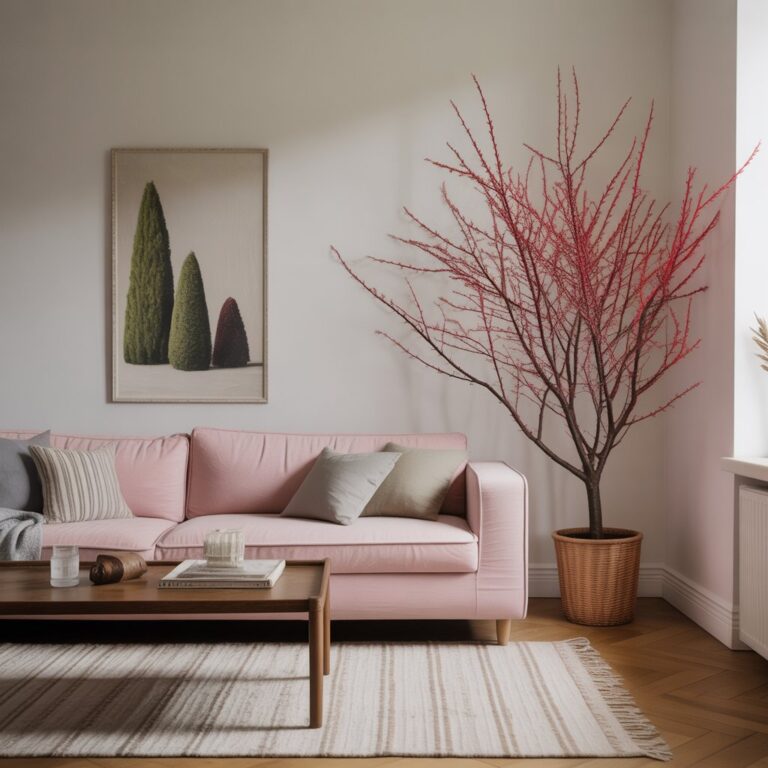The term “pyntekvister” translates from Norwegian to mean decorative branches, and it has quickly become a popular trend in interior design and home styling. As people look for natural, sustainable, and affordable ways to decorate their living spaces, pyntekvister have gained attention across home décor blogs, Scandinavian lifestyle magazines, and social media platforms. These elegant decorative branches add texture, height, and beauty to any space, whether arranged in a vase, hung as wall art, or used in seasonal displays. The growing popularity of pyntekvister is proof that minimalistic and nature-inspired décor is here to stay, and it offers homeowners and decorators an easy way to elevate any room.
What Are Pyntekvister and Why Are They Special?
Simply put, pyntekvister are branches—either natural, dried, or artificial—that are used for decorative purposes. Unlike flowers that often fade quickly, pyntekvister offer long-lasting charm and can be reused for different seasons and occasions. They come in many forms, from elegant willow branches to painted birch twigs or even artificial golden branches used for festive events. What makes them special is their versatility. Whether you prefer rustic farmhouse style, modern Scandinavian minimalism, or glamorous festive décor, pyntekvister can fit seamlessly into any theme. They allow decorators to embrace nature indoors while maintaining a stylish, curated look.
Different Types of Pyntekvister for Home Decoration
When it comes to pyntekvister, there are countless styles to choose from depending on your personal taste and interior theme. Some popular types include:
-
Natural branches – These are often collected from the outdoors, cleaned, and styled to bring raw, rustic beauty into the home.
-
Painted or sprayed branches – Metallic gold, silver, white, or bold colors add a modern and festive touch.
-
Dried botanical branches – Eucalyptus, willow, or pampas branches fall into this category, perfect for a soft and elegant aesthetic.
-
Artificial pyntekvister – Made of plastic, resin, or silk, these are designed to last indefinitely while still offering realistic beauty.
Each type of pyntekvister has its own charm, and many decorators enjoy mixing different styles to create dynamic arrangements.
How to Use Pyntekvister in Home Styling
The beauty of pyntekvister lies in their adaptability. They can be styled in a vase as a centerpiece on a dining table, arranged in floor-standing containers for dramatic effect, or even hung on walls as a minimalist art piece. During holidays like Christmas or Easter, pyntekvister are often decorated with ornaments, lights, or ribbons, making them a seasonal favorite. They can also be combined with flowers, candles, and textiles to enhance the atmosphere of a space. For small apartments, pyntekvister are especially practical since they take up minimal space while still making a bold decorative statement.
The Scandinavian Connection: Pyntekvister and Nordic Minimalism
The popularity of pyntekvister is deeply connected to Scandinavian design principles, where simplicity, natural elements, and functionality are key. In Nordic homes, branches and natural materials are often used to bring warmth and balance into otherwise minimalist spaces. By incorporating pyntekvister, homeowners can achieve the iconic Scandinavian “hygge” feeling—coziness, comfort, and harmony with nature. This explains why pyntekvister are trending not just in Norway, but globally among fans of Nordic-inspired living.
Buying vs. DIY: Where to Get Pyntekvister
When searching for pyntekvister, you have two main options: buying them or creating them yourself. Many interior shops, online décor stores, and even supermarkets sell ready-made pyntekvister in various colors and styles. However, DIY enthusiasts often prefer collecting natural branches from the outdoors, drying them, and customizing them with paint or seasonal decorations. The DIY route allows for personalization and creativity, while store-bought options are convenient and professional-looking. Both approaches make it easy to incorporate pyntekvister into any home.
Sustainability and Eco-Friendly Benefits of Pyntekvister
Another reason why pyntekvister are gaining popularity is their eco-friendly nature. Using natural branches for decoration reduces reliance on synthetic décor items, and since they are reusable, they generate less waste compared to cut flowers. Even artificial pyntekvister can be considered sustainable if they are reused for years across different occasions. With more people focusing on environmentally conscious living, pyntekvister offer a stylish yet sustainable solution for modern homes.
Conclusion: Why Pyntekvister Are Perfect for Modern Homes
In conclusion, pyntekvister are more than just decorative branches—they represent a design movement that values nature, minimalism, and sustainability. Whether used in a Scandinavian-inspired home, as part of festive holiday décor, or as a simple centerpiece, pyntekvister bring elegance and charm to any environment. Their versatility makes them a timeless choice for both professional decorators and everyday homeowners. As trends continue to move toward eco-friendly and nature-inspired living, pyntekvister are likely to remain a staple in home décor for years to come.
Frequently Asked Questions (FAQ) About Pyntekvister
Q1: What does pyntekvister mean?
Pyntekvister is a Norwegian word that translates to “decorative branches,” often used in home décor.
Q2: Can I make my own pyntekvister?
Yes, many people collect natural branches, dry them, and decorate them with paint, lights, or ornaments for a DIY touch.
Q3: Where can I buy pyntekvister?
They are available in home décor shops, online retailers, supermarkets, and even craft stores, especially during festive seasons.
Q4: Are pyntekvister eco-friendly?
Yes, since they are reusable and often made from natural or sustainable materials, they are an eco-friendly alternative to disposable decorations.
Q5: How can I style pyntekvister at home?
They can be placed in vases, arranged as table centerpieces, decorated for holidays, or hung on walls as minimalist art.

